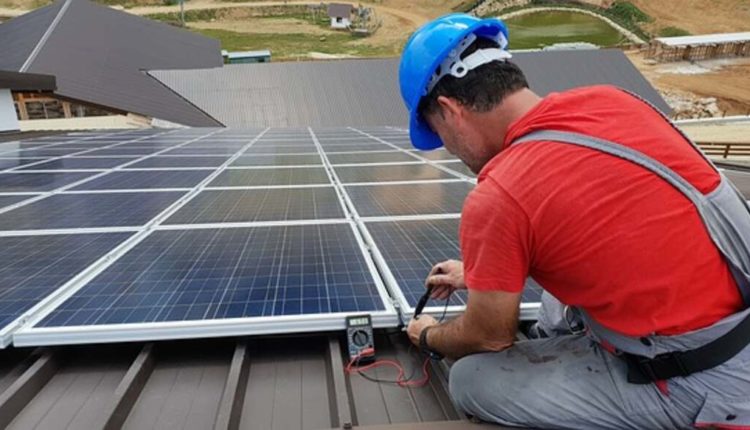People sometimes give me the “it’s too expensive, I can’t afford it” look when I ask whether they’ve ever considered installing a solar photovoltaic electric system.
The truth is that going solar is a must. And here’s why I’m saying it… Let’s temporarily put aside environmental concerns and focus on the financial implications.
Local, state, and federal governments often offer financial incentives to homeowners who install solar panels. Being a California resident, I will only discuss the most common federal and state incentives. To find out what local or statewide resources are accessible, it’s vital to look about.
We have a lot of local programs in California right now, but I will talk mainly about the tiered state rebate scheme. This system, which began at tier 1 and will eventually reach tier 10, was developed over several years. Just what does that imply? At Tier 3, the state directly pays the system owner of roughly $2.20 per watt in rebates. The rebate amount decreases as each tier is reached. A person’s ability to save money on a solar energy system decreases the lengthier they wait to get started. As a result, there is no more time for deliberation, as postponing a choice for too long will significantly lessen the incentive.
The federal tax credit program offers a 30% tax credit off the entire cost of a system, complementing the state rebate scheme. In most circumstances, this credit will save between $0.22 and $0.40 per watt. The maximum amount a homeowner can receive under the 30% tax credit this year (2008) is $2000; however, as of January 1, 2009, that limit no longer applies to anyone purchasing a system.
What does this entail for a person who wants to install a regular photovoltaic system in their home? If the average sales price is $8 per watt, the rebates and tax credits amount to about $4.45 for the homeowner or business. That’s a savings of 55% or more compared to a system wholly connected to the grid.
However, you may find wonder about the upfront costs of purchasing the system. Sure, that makes sense. Now that photovoltaics are maturing, various financing options have emerged to serve the growing demand in this niche sector, making an investment in such a system more attractive than ever.
One option is a signature loan for up to $100,000 for people with solid credit or an equity loan for those with equity in their house or business to finance the purchase of clean power. There are other business and government lease programs and short-term residential lease options.
With this newfound information, let’s examine the motivations behind going into debt to pay for a solar energy installation. If homeowners can reduce their reliance on their preferred power utility company, they can become energy independent, avoid rate hikes in the future, and save significant amounts of money. Do I need to elaborate on how tax breaks, credits, depreciation, and lower utility costs can improve a company’s bottom line?
Let’s examine a typical home electricity bill as an example of what I mean. Here is how that monthly $300 in electricity bills would be spent for our homeowner.
For the sake of simplicity, we’ll assume a few things about the potential advantages of financing a system; these numbers are not set in stone and serve only as an example.
Let’s say our homeowner has a $300 monthly electric bill, and requires a 5200-watt system to eliminate it.
An Example of a System Financing Plan
Power Required by System 5.2 kilowatts (8 dollars) = $41,600
Balance financed of $30,160 (no money down program OAC) Tier 3 state rebate of $2.20 -$11,440
Interest Rate for 15-Year Clean Energy Loan: 6.99% Per Month Payment of $270 for Clean Power
Monthly $30 cost savings on electricity.
30% Federal Tax Refund Credit of $12,480
Assuming a $2,496 annual tax return 30 percent tax rebate
The Solar Investment Tax Credit Pay off a 15-year loan in as little as 7 with the help of this program. By devoting the yearly tax return to the loan principal
Reduced interest costs thanks to early repayment. $11,081
A savings of $2,520 over seven years on electric bills.
A total of $13,601 was saved!
Zero dollars in electricity bills in year 8.
In light of these findings, it is clear that investing in, installing, and maintaining a solar system is not just a good idea but also a financially sound one. However, the payout is faster when leasing a system for a shorter period, and the system owner can enjoy the benefits of free electricity for many more years.
With a lease, a company can deduct lease payments, have a $1.00 buyout option, and depreciate the equipment over time while enjoying greater financial flexibility. No knowledge of economics is required to see that a solar system may be financed profitably without any out-of-pocket expenses. There is no need to sell off savings, retirement funds, or other assets to achieve financial independence from the energy company in a few years.
Remember that the sun’s light is free; all you have to do is invest in the machinery to collect it.
Provost Konstantine,
A successful businessman, investor, radio personality, and expert in mortgages and real estate. A green sustainable home builder that doubles as a photovoltaic retailer and installer of affordable home and business solar power systems. Please see [http://solarutilitiesnow.com] for additional solar-related details. If you’re interested in eco-friendly housing, check out http://blueoceanhomes.info/ or email me at.
Read also: Techniques for Using a New Car Getting Service
